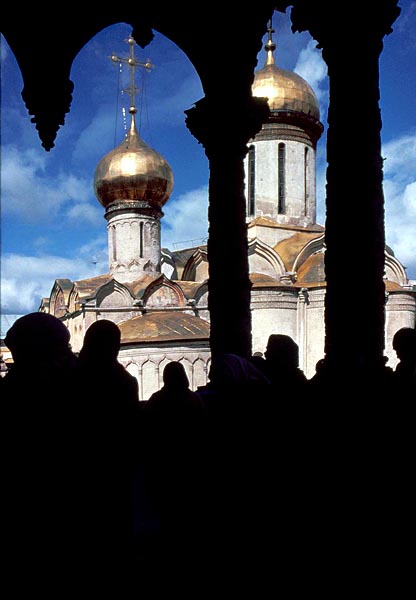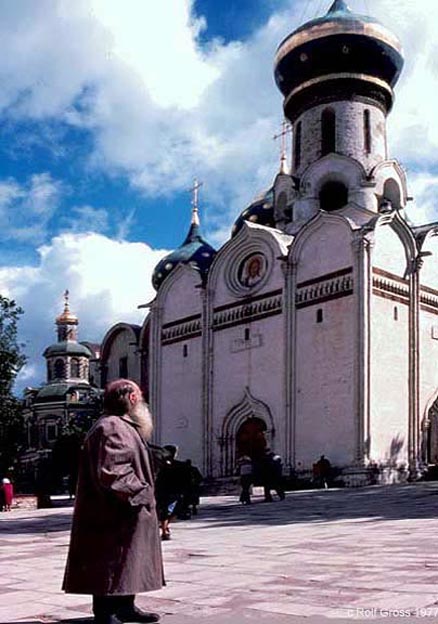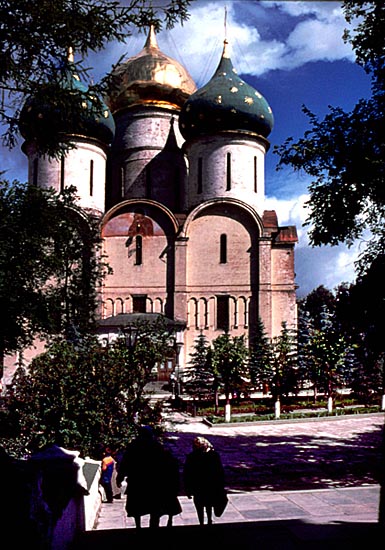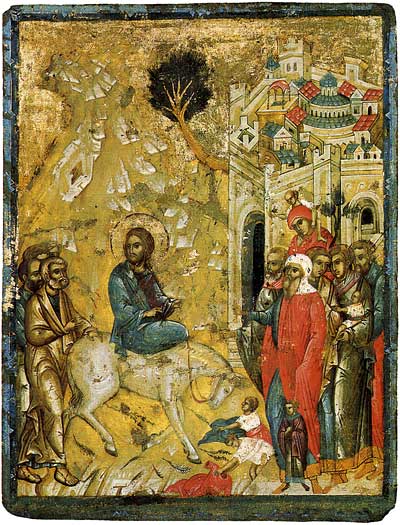
Photo RWFG 1977
Troitsy-Sergiyeva Lavra founded by St. Sergius of Radonezh in 1345 a highly revered monk and the patron saint of Russia
Sergiev
Posad, The Troitsky Sergieva Lavra
Link to Google-Earth file Sergieva Lavra.kmz
This requires that you have GE on your hard disc.
History of the Lavra
Troitsky
monastery was founded around 1340 by Abbot Sergius (b. ca. 1319), the
son of an impoverished boyar of Rostov. Soon after his death in 1392,
the town of Moscow and the Troitskaya monastery were devastated by a
horde of Tartars. On their retreat, Nikon, the successor of Sergius
as abbot, found the body of Sergius uninjured amid the smoking ruins
of the convent. This miraculous preservation of the body of St.
Sergius soon became widely known, and crowds of believers hastened to
pray at his grave. The monastery was quickly rebuilt, and in the
middle of the 16th cent. it was surrounded by a lofty wall.
In
1685 it provided a refuge to the young Tsars Ivan and Peter the Great
from the rebellious Strelitsi. In 1812 the Troitskaya monastery was
not disturbed by the French, and this immunity is ascribed by the
devout to the miraculous powers of the icon of St. Sergius
Adapted
from Karl Baedeker, "Russia", Leipzig, 1914
Troitsy-Sergiyeva
Lavra
1345

Photo RWFG 1977
Troitsy-Sergiyeva Lavra founded by St. Sergius of Radonezh in
1345 a highly revered monk and the patron saint of Russia
The
Holy Trinity Lavra or Troitsy-Sergiyeva Lavra (Trinity-Sergius
Monastery) is the most important monastery of Russia and the
spiritual center of Russian Orthodox Christianity. Sergius' charter
was used as a model for more than 400 monasteries founded by his
followers throughout Russia, including the celebrated Solovetsky,
Kirilov, and Simonov monasteries. In 1422 Sergius' relics were
interred in the monastery's first stone cathedral (Cathedral of the
Holy Trinity), built by a team of Serbian monks who had found refuge
in the monastery after the Battle of Kosovo. The greatest icon
painters of medieval Russia, Andrei Rublev and Daniil Chyorny, were
summoned to decorate the cathedral with frescoes.
In exchange
for his controversial conversion to Orthodoxy during World War II,
Stalin returned the Holy Trinity Lavra to the Patriarch of the
Russian Orthodox Church in 1945. On April 16, 1946 divine service was
renewed at the Assumption Cathedral. The Lavra remained the seat of
the Patriarch of Moscow until 1983, when he moved to the Danilov
Monastery in Moscow.
Pilgrims
on the way to the Holy Trinity Cathedral
1322

Photo RWFG 1977
Pilgrims on their way to the Churchof
the Holy Trinity (1322) where Sergiy of Radonezh, the founder of the
monastery is buried (in the small chapel) and (a copy of) Rublyov's
famous icon is kept.

Photo RWFG 1977
Andrei Rublyov "The Old
Testament Trinity", Russia's most revered icon. 1411 , now in
the Tretyakov Gallery
Link to the
The
most Hallowed Iconostasis of the Trinity Cathedral
Rubelyev's Last
Major Work 1425-1427
Tolstoy
in Front of the Church of the Holy Ghost
1476

Photo RWFG 1977
The Church of the Holy Ghost.
In 1476, Ivan
III invited Pskovian masters to build the Church of the Holy Ghost.
This graceful structure is one of the few remaining examples of a
Russian church topped with a belltower. The interior contains the
earliest specimens of the use of glazed tiles for decoration.
Uspensky
Cathedral of the
Assumption
1559

Photo
RWFG 1977
The Cathedral of the Assumption
It took 26 years to construct the six-pillared Assumption Cathedral, which was commissioned by Ivan the Terrible in 1559. The cathedral is much larger than its namesake in the Moscow Kremlin. The iconostasis dates to the 16th–18th centuries. Interior walls were painted with violet and blue frescoes by a team of Yaroslavl masters in 1684.

Photo icon-art.com
The Ascention of the Virgin, from the "Trinity Tablets"
second quarter of the 15th cent, Sergiev-Posad Museum, Russia .

Photo icon-art.com
Entry into Jerusalem, from the "Trinity Tablets",
second quarter of the 15th cent, Museum Sergiev-Posad.
Rastrelli's
Bell Tower
1744

Photo RWFG 1977
1744, commissioned by Empress
Elizabeth.